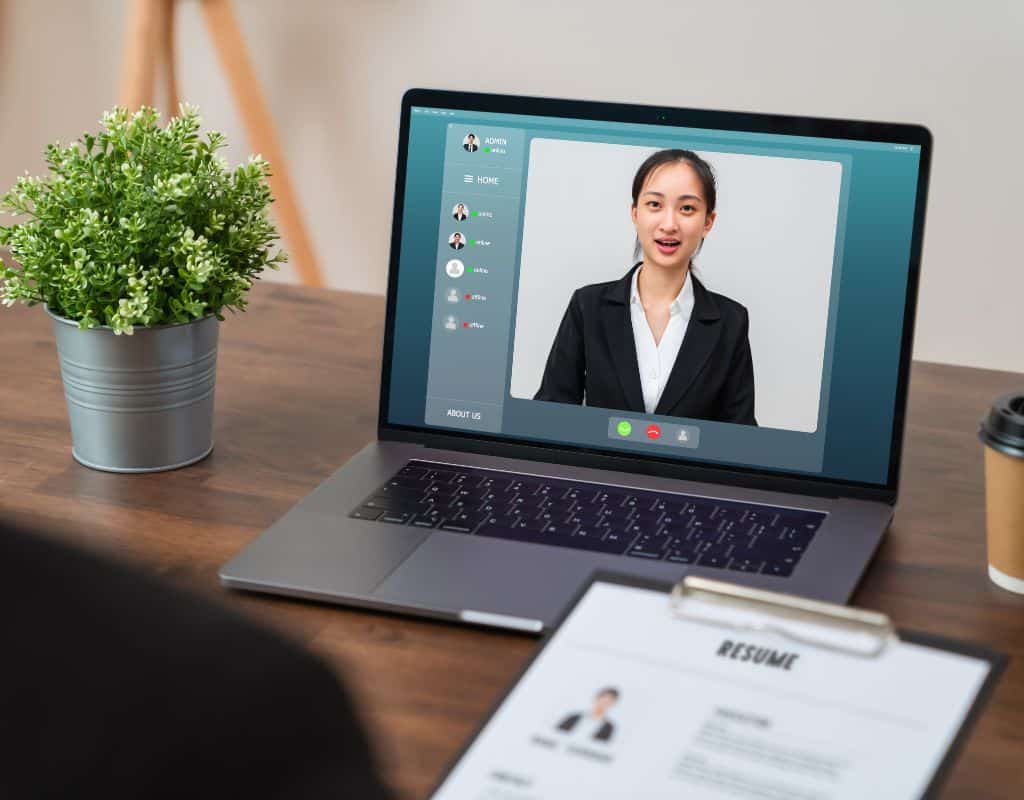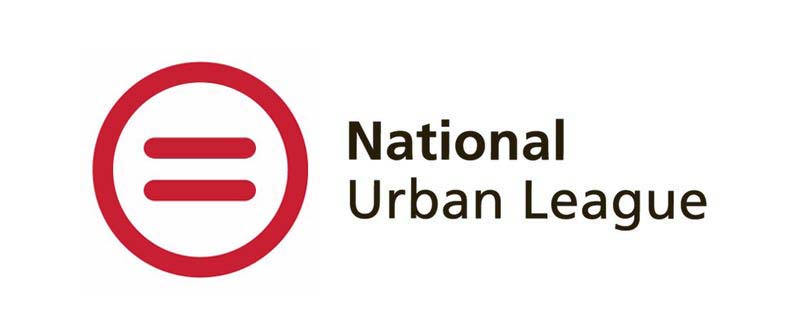You’re overjoyed that you’ve been invited to interview. Only, instead of receiving a typical job interview email for a phone screen or live interview, you’ve been asked to complete a one-way interview, and now you’re confused. If interviewing is a two-way street, what the heck is a one-way interview?
One-way interviews are an efficient method of screening candidates in the early stages of the application process. And while you may think they are unfair to job seekers because they can’t ask questions during the interview, one-way interviews offer many benefits to applicants.
This guide will help you understand why companies use one-way interviews, how they can help you during the screening process, and how to present yourself in the best possible light!
What Is a One-Way Interview?
A one-way interview is a type of digital interview. “Digital interview” is an umbrella term that includes different styles of video interviewing.
One-way interviews, sometimes called on-demand interviews, are an asynchronous style of interviewing applicants. In a nutshell, a candidate is invited to record their answers to a series of preselected interview questions. The recruiter or hiring manager then reviews the answers and decides if the candidate should continue to the next step. It’s similar to a phone interview, but through video and without the live interaction.
How Is a One-Way Interview Different From a Live Interview?
Outside of the obvious (like you can record the interview from home), there are two notable differences between a one-way interview and a live interview.
First, in a one-way interview, you either read the questions on-screen or watch a prerecorded video of someone asking them. In some cases, it’s a combination: you can see the question on screen while a voice reads them aloud.

Unspoken Interview Fundamentals
Get ready for a video interview in this free course from Comcast. You'll learn how to explain why you're the right person for the role and practice recording your answers.
Avg. Time: 2-3 hours
Skills you’ll build: Video interviewing, verbal communication, telling your professional story
The other distinct feature of a one-way interview is that there’s no back-and-forth between you and the interviewer. You can’t ask for clarification, and the interviewer cannot follow up or prompt you for more information (though they may follow up after the fact for additional details).
Why Do Companies Use One-Way Interviews?
One-way interviews have several advantages over live interviews for employers and applicants.
Flexibility
One-way interviews are asynchronous, allowing you to record your interview from almost wherever and whenever you want. That means you can pick a time and date that’s optimal for you instead of trying to squeeze the interview into a hectic schedule.
One-way interviews also enable you to record your answer at your convenience. So, if you’re a morning person and do your best work at 6:00 a.m., you can record your interview then and be confident you’re presenting your best self.
The same is true for the company. The recruiter or hiring manager doesn’t have to try and find a time when both parties are available, freeing them up to attend to other tasks.

Expert Tip
One-way interviews are often used in the screening process, but can be used at any point in the interview process depending on the role and industry. Double-check the type (live video interview vs. one-way interview) when you agree to a digital interview because they are two very different experiences.
— Sean Fahey, CEO, Vidcruiter
Undivided Attention
In tandem with this, one-way interviews ensure you’re not the last interview of the day. You won’t run the risk of the interviewer being tired of asking the same question for the 10th time that day or worried they’re not really listening to you because they just want to go home.
Likewise, watching a recording means the hiring manager is likely paying close attention to your answers. They can review responses whenever they want, allowing them to focus on what the candidate is saying instead of worrying about the next interview or other pressing tasks. Plus, the recruiter can pause the interview if something urgent comes up and rewatch it later.
Fairness
One-way interviews standardize the screening phase of the application process. “They create a consistent interview experience and provide hiring teams with much more insight into you as a candidate,” says Sean Fahey, CEO of Vidcruiter.
Every candidate is asked the same questions in the same manner and has the same amount of time to answer them. Moreover, the interviewer can’t ask follow-up questions, ensuring every candidate receives the same treatment.
Skills Test
And one more reason companies use one-way interviews is that they can be a test of your communication skills. Deepali Vyas, CEO and founder and CEO of Fearless+, points out that one-way interviews test your “ability to articulate and communicate answers in a succinct way.”
When you’re in a live interview, there’s usually no time limit on your answer. Hopefully, you don’t ramble, but if your answer takes 68 seconds, it’s not a big deal. But, in a one-way interview, you’re given a certain amount of time to answer and no more. The recording will cut you off mid-word (though not all do).
“Candidates who can convey technical information in a simplistic way are the ones that can win over recruiters,” Vyas says.
Connect With Top Talent
Whether or not the job is remote, one-way interviews allow employers to search for and screen candidates no matter where they live. “They transcend geographic limitations, opening doors to a larger candidate pool so recruiters can find top talent anywhere,” says Fahey.
Does AI or a Human Review My Answers?
With all the buzz around AI, you might be worried that a robot reviews your one-way interview and decides whether or not you make it to the next round. Fortunately, that’s likely not the case. Fahey explains:
Not all video interview platforms use AI to assess candidates or make decisions. Research indicates that using AI to assess, filter, or source candidates poses a high risk of introducing bias into the process, which is difficult to address, given the lack of transparency and human accountability in decision-making. You should be notified about the use of AI at the beginning of the process or interview if the platform uses it, and you may be able to decline the use of AI in your evaluation if you don’t feel comfortable.
Plenty of interview platforms still use raters to review and score your video interview. Once you finish your interview, evaluators go in when they are ready and follow a rating guide to assess your responses against job-relevant criteria (hint: it’s often in the job description!).
How to Ace a One-Way Interview
Before we give you the tips and tricks for nailing a one-way interview, here’s how they generally work.
You’ll be invited to complete a one-way interview via a specialized platform. The specifics will vary, but most platforms allow you to log in and test your equipment before you get to the interview.
When you’re ready to record your answers, you’ll likely have access to a practice session first. This gives you a chance to experience the process before the main event. Even if there is no practice session, you should be given the specifics of how your one-way interview will work (e.g., you’ll have 30 seconds to read or listen to the question, 60 seconds to record your answer, etc.).
During the recording, you’ll get a question, then a countdown clock appears. This lets you know when the recording begins. Once it starts, you’re on. There’s also a timer that lets you know how much longer you have until the recording cuts off.
You’ll repeat this process until you get to the last question, then submit your answers.
It sounds simple enough, and it really is. Just think of it as a Zoom interview where you do all the talking. That said, here are the specific things you need to know to ace a one-way interview.
>>MORE: 12 Tips for Your Next Zoom Interview
Before Your One-Way Interview
Like any interview, you need to do some prep work for your one-way interview. That starts by reading the instructions on the invitation. Even though this is an on-demand interview, meaning you can do it when it suits you, there may still be a deadline. Give yourself plenty of time to get it done.
Also, the platform may have certain technical requirements. You might need a specific operating system or have to login through a personalized link. Make sure you review all the details to ensure you don’t miss anything.
Do a Tech Test
As mentioned above, most platforms allow you to log in outside of your one-way interview and test your equipment. Don’t skip this step! Even if your tech meets all of the requirements, take some time to assess how things look on camera.
Fahey notes, “This tech check is where you can check lighting and camera position, decide if you want to turn on back blur, adjust the background, and make sure you are happy with your chosen environment.”
Figure Out Where to Go
As a rule, high-speed internet is a requirement for one-way interviews. Hopefully, you have a reliable connection at home. However, that may not always be the case. What’s more, you have to record your answers somewhere where you won’t be interrupted. If your current living situation doesn’t meet these requirements, consider some of the following options:
- Your car. If your internet connection is stable, your car can be a good place to record your one-way interview.
- The library. Consider booking a private study room where you can speak without disturbing others.
- The bathroom. If you have a private bathroom, it can be a decent alternative if you can obscure the fact that you’re in a bathroom.
- A closet. This isn’t always the best choice, but if it’s the only place with a good internet connection and it’s big enough, give it a shot.
Use the Practice Round
Just like you shouldn’t skip the tech test, don’t skip the practice round. It gives you a chance to get comfortable with the system. You can see where the questions appear and where the timers are.
And speaking of practice, you need to get comfortable being the only speaker on camera. “Download a teleprompter tool on your phone,” Vyas advises. “Write your own questions and answer them. This self-video will allow you to practice and assess how you are coming across with different questions.”

Interview Preparation: Own Your Story
Get interview ready in this free course from Bryan Cave Leighton Paisner. Learn how to identify and explain your professional skills and abilities.
Avg. Time: 3-4 hours
Skills you’ll build: Storytelling, interview prep, self-reflection, communication, career management
Finally, even if you’ve used this particular on-demand interview platform before, you should still do the practice round. Some platforms allow employers to customize the experience, so what you experienced last time may not happen this time.
Rehearse Your Answers
Even though this is an on-demand and asynchronous interview, it’s highly unlikely you’ll have the interview questions in advance. “Normally, no questions are given in advance,” says Vyas. “You will have a few seconds to gather your thoughts and communicate your answer, trying to recreate a ‘real-time’ experience as much as possible.”
But that doesn’t mean you should skip the interview prep and hope for the best! Most one-way interviews are part of the early screening process, so you’ll likely you’ll be asked very common interview questions such as:
- Why do you think you’re qualified for this position?
- Tell me about yourself.
- What is your weakness?
- What is your greatest strength?
- Why are you applying for this position?
Fahey advises job seekers to record themselves answering these interview questions to get comfortable with the process, without overdoing it. “The goal isn’t memorization — it’s confidence! The more prepared you are, the more you can condense your answers down to make them concise and to-the-point.”
Check Out What’s Behind You
While you know your background should be neat and tidy (or neutral), don’t forget about the sound behind you. Think about background noise that may interfere with your recording.
Vyas advises job seekers to consider using some kind of headphones during their one-way interview to block out any sounds that might distract them. Likewise, if those headphones have a microphone, that can help the interviewer focus on what you’re saying and decrease the odds that background noise will interfere with the recording.
During Your One-Way Interview
With all of your practice and preparation out of the way, it’s time for the real deal. Keep these tips in mind to help you stay calm and confident throughout your one-way interview.
Maintain “Eye” Contact
One vital piece of interview advice is to maintain appropriate eye contact with your interviewer. It shows your interest in the role and that you are engaged with the process. But how do you maintain eye contact with an interviewer who isn’t there?
Instead of maintaining eye contact, you’ll maintain “camera” contact. Always look directly into your device’s camera. This way, when the recruiter watches your video, they’ll get the impression you’re looking them right in the eye!
Of course, you don’t want to stare at it the whole time. That could be a little strange, so it’s OK to break contact occasionally, just like you do when you’re talking to someone in person. Just make sure you go back to making eye contact when it feels appropriate and natural.
And if you find you’re having trouble maintaining eye contact with a camera, take a sticky note and write “Look Here!” on it. Place it just below the camera. Or draw a pair of eyes on the note, or even consider using a picture of someone you’re comfortable talking to. This serves as a visual reminder to “look here,” and your interviewer will never know it’s there!
Ignore Your Image
Some on-demand interview platforms allow you to see yourself as you record. You might have a small window in the corner, or you could take up the entire screen! And while you’re probably used to seeing yourself on camera using FaceTime or in a Zoom meeting, that’s very different from watching yourself talk to yourself in a one-way interview.
It’s easy to get distracted. Am I smiling enough? Why does my hair look so weird? Is that a stain on my shirt?
If your image is in a small box and it’s distracting, grab another sticky note and cover it up. If your image is large, you probably can’t cover it up. Instead, keep your eyes on the camera and when you need to look away, look to the left or right of the camera, but not at the screen.
Pay Attention to Your Movements
That said, don’t completely ignore yourself. Pay some attention to how you look and move. Are you sitting up straight? Swiveling in your chair? Playing with your hair or tapping a pen? There may be nobody else in the room, but unprofessional behavior in a one-way interview could hurt your chances of making it to the next round.
Be Yourself
OK. “Be yourself” is overdone advice that you already know, but it holds true, especially in a one-way interview. Answering interview questions by yourself is an odd experience. It’s not unusual to feel awkward, which could lead to you acting like, well, not yourself. You might end up sounding robotic, rehearsed, or monotone, notes Vyas.
Instead, she advises reacting “with authenticity, and the tone of your voice will naturally pitch based on your level of enthusiasm and passion.” So, don’t worry that it feels like you’re talking to yourself about yourself. Remember who you are, why you applied, and why you’re qualified for the role to help you react naturally and positively to each and every question.
Smile
“Smile” is another piece of interview advice you hear a lot but, “smile” for a one-way interview falls a bit flat. You’re unlikely to smile when there’s no one smiling back at you, and yet when you realize you’re not smiling, you may plaster a big grin on your face.
“When in doubt, always smile,” says Vyas. “It doesn’t have to be a big toothy smile, but keep a polite smile on your face that makes you look positive and optimistic. It’s helpful to think how you are when you FaceTime with a family or friend and how you naturally appear on camera with a smile.”
Try Again
One of the significant advantages of one-way interviews is that you often get a second chance to make a first impression!
Some platforms allow you to re-record your answer. If it is allowed, it may be limited to one do-over. But, if you tripped over your words or a car alarm interrupted your answer, a re-recording may be in order.
That said, try not to think up a brand-new answer. Your gut instinct was probably right the first time, so stick with that. Plus, you may only get a limited amount of time to restart the recording. You’re better off mentally preparing yourself to repeat the same answer instead of trying to second-guess yourself and come up with an entirely new response.
After Your One-Way Interview
Finally, after you’ve uploaded your answers, send a thank you note to the recruiter or hiring manager. The wording will be different from other interview thank you notes since you won’t be able to mention something the two of you discussed. But a thoughtful message expressing gratitude for the opportunity to answer their questions goes a long way toward showing you’re a professional who is deeply interested in the job.
Image credit: Canva
Frequently Asked Questions
Fahey says that in most cases, you can record a video interview on your phone. “One way interviews can usually be done from any device with a camera as long as it has a strong internet connection.” So, if your phone is your best option, go for it. Keep in mind you may have to download the platform’s app and you may want to invest in a tripod, so your arm doesn’t tire out.
The same thing you’d wear to a Zoom interview or in-person one. Dress professionally and appropriately for the role and company. Read up for more tips on what to wear to a job interview, no matter where it is!
That depends on the company. Generally, you’ll have between 30 and 60 seconds for each answer, though some allow as much as three minutes.
That depends on how many questions you have to answer, how long you have to answer each question, how many times you re-record your answers, and so much more. Most one-way interviews take between 20 and 30 minutes, though some can take up to 45 minutes. Read more about how long a job interview lasts.
Using notes to help you answer interview questions is perfectly acceptable as long as you don’t use them like a script. Remember to look into the camera and maintain eye contact. Otherwise, all the recruiter will see is the top of your head!


